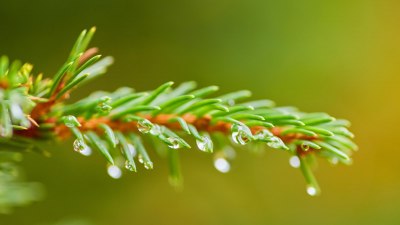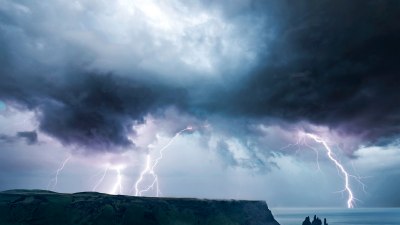What Happens to a Snowflake as It Falls to Earth
Discover the journey of a snowflake from cloud to ground and the science behind its unique structure.

Snowflakes are one of nature's simplest yet most complex phenomena. Though they are tiny and delicate, their formation and journey to the ground involve intricate processes that beautifully illustrate the principles of physics and chemistry. Understanding what happens to a snowflake as it falls to Earth reveals the myriad factors influencing its formation, structure, and eventual fate upon landing. This article delves into the fascinating journey of a snowflake from the moment it forms in the clouds to its touchdown on Earth.
The Formation of a Snowflake
Before a snowflake can fall, it must first be formed in the atmosphere. This process begins high in the clouds, where water vapor exists in a gaseous state. As temperatures drop below freezing, water vapor condenses into ice crystals rather than liquid water. This occurs due to the process of deposition, where the water vapor transitions directly from a gas to a solid state. The initial formation of these ice crystals is influenced by various factors including temperature, humidity, and the presence of particles in the atmosphere, such as dust or pollen, which can serve as nucleation sites.
The Unique Structure of Snowflakes
One of the most intriguing aspects of snowflakes is their structure. As an ice crystal forms, it begins to grow in a hexagonal pattern due to the arrangement of water molecules. The six arms of a snowflake develop as water molecules attach to the crystal, creating intricate and unique designs. The temperature and humidity at which a snowflake forms significantly influence its shape and appearance. For instance, higher humidity and lower temperatures can lead to more elaborate, branched snowflakes, while drier air might result in simpler shapes. It is fascinating to note that no two snowflakes are exactly alike; their unique environmental conditions contribute to an endless variety of forms.
The Journey to Earth
Once a snowflake is formed, it begins its descent to the ground. The falling snowflake moves through layers of air with varying temperatures and humidity levels. As it descends, the dynamics of air currents can significantly affect its trajectory. Some snowflakes may collide with others, causing them to combine and grow in size, while others may break apart. The speed at which a snowflake falls can vary; typically, snowflakes fall at a rate of 1 to 5 feet per second depending on their size and shape. The interaction with the surrounding environment can further modify the snowflake's structure and characteristics.
Environmental Conditions and Their Impact
Several environmental factors play a crucial role in determining what happens to a snowflake on its way to Earth. Temperature is perhaps the most critical factor; as a snowflake falls through warmer air, it can undergo a process called sublimation, where it turns directly from a solid to a gas, causing it to shrink or even disappear before reaching the ground. When snowflakes fall through especially warm layers of air, they may partially melt, transforming them into sleet or freezing rain, which can drastically alter the conditions on the ground.
The Fate of a Snowflake Upon Landing
When a snowflake finally lands on the ground, its fate is determined by several factors. If the temperature is cold enough, the snowflake may remain intact, joining its fellow snowflakes to create a blanket of snow. The accumulation of snowflakes can lead to various phenomena, including snow cover, which can insulate the ground and impact local ecosystems. If the conditions are warm enough, the snowflake may melt and turn into liquid water, which can either soak into the ground, contribute to local waterways, or evaporate back into the atmosphere.
The Role of Snowflakes in the Ecosystem
Snowflakes play a vital role in the ecosystem. When they accumulate, they provide insulation to the ground, protecting plants and animals during winter. The layer of snow can help maintain moisture levels in the soil as it melts, feeding rivers and streams, and supporting the growth of vegetation in the spring. Snowmelt is crucial for the ecosystem, particularly in mountainous regions where the spring runoff provides water to areas that rely on it throughout the summer.
Snowflakes and Climate Change
As the climate changes, the characteristics and behaviors of snowflakes may also be affected. Warmer temperatures can lead to changes in snowflake formation, melting patterns, and the overall amount of snowfall. These changes have significant implications for ecosystems, water supply, and weather patterns. Understanding how climate change impacts snowflakes is essential for predicting future environmental conditions and preparing for their effects.
The journey of a snowflake from cloud to Earth is an extraordinary process that reflects the beauty and complexity of nature. Each snowflake embodies a story of formation, descent, and interaction with the environment. As scientists continue to study these tiny ice crystals, we gain deeper insights into atmospheric processes, climate change, and the essential roles snowflakes play in our ecosystems. So, the next time you see a snowflake falling, remember the incredible journey it has taken and the larger impact it has on the world around us.











